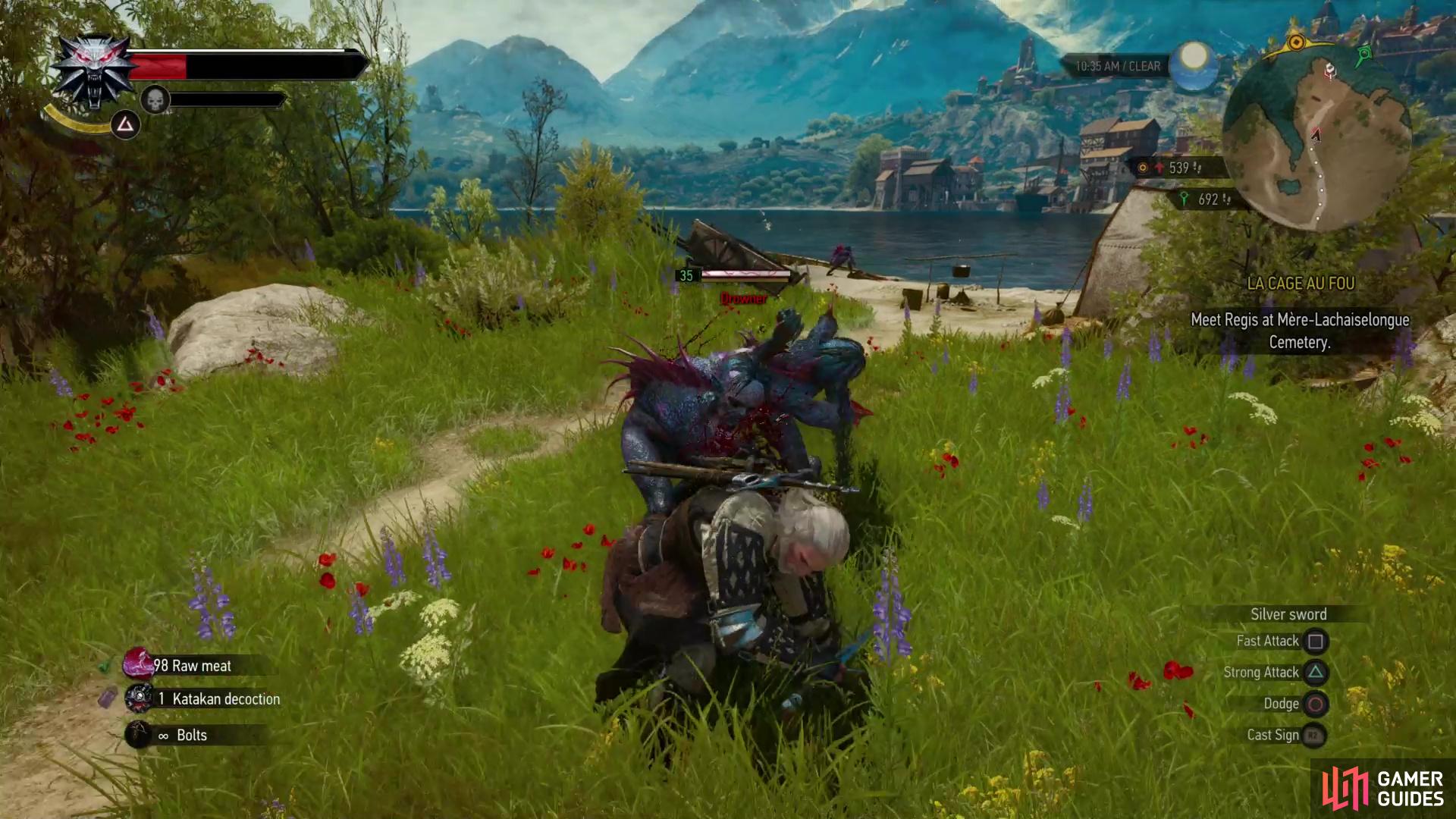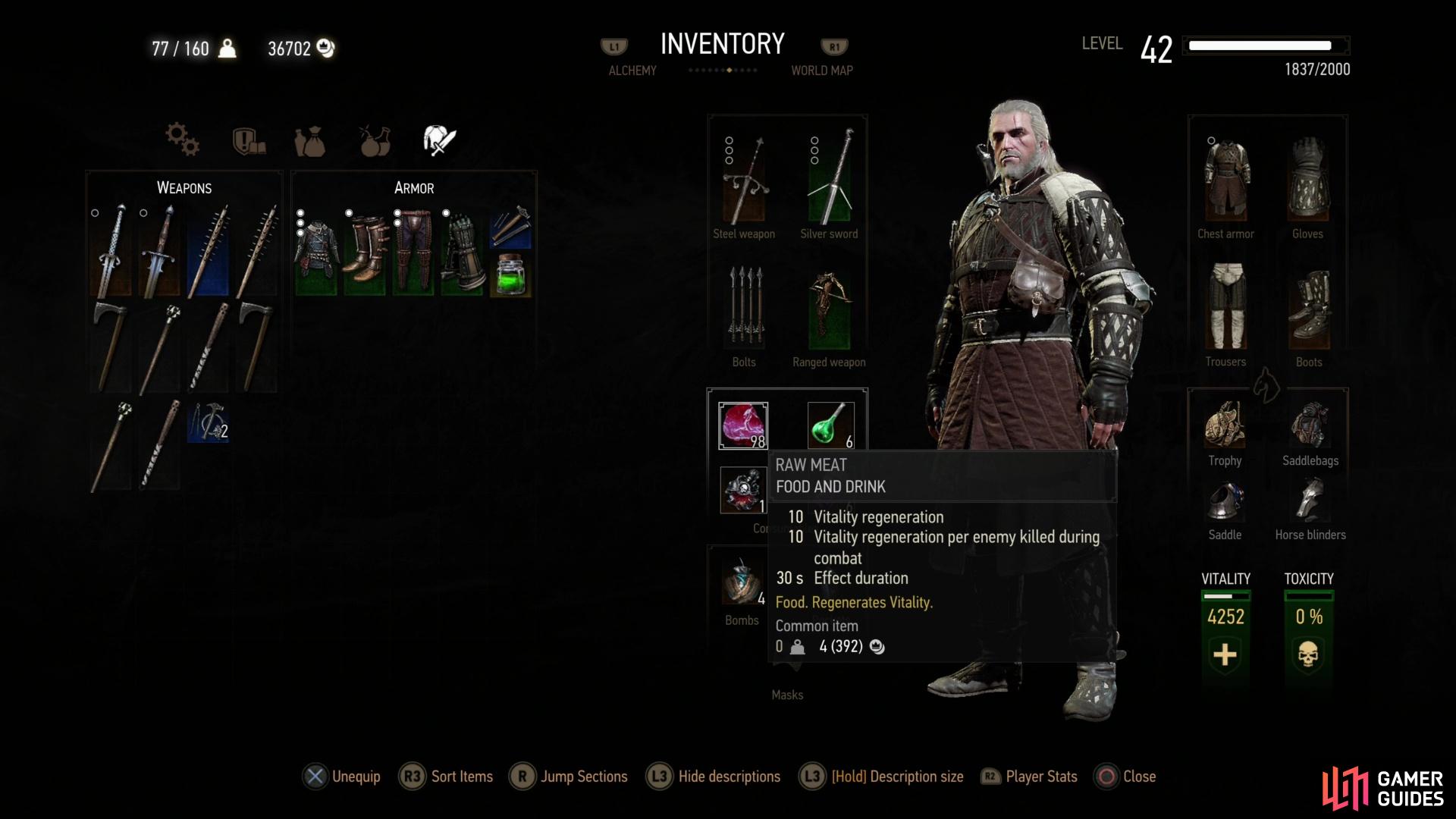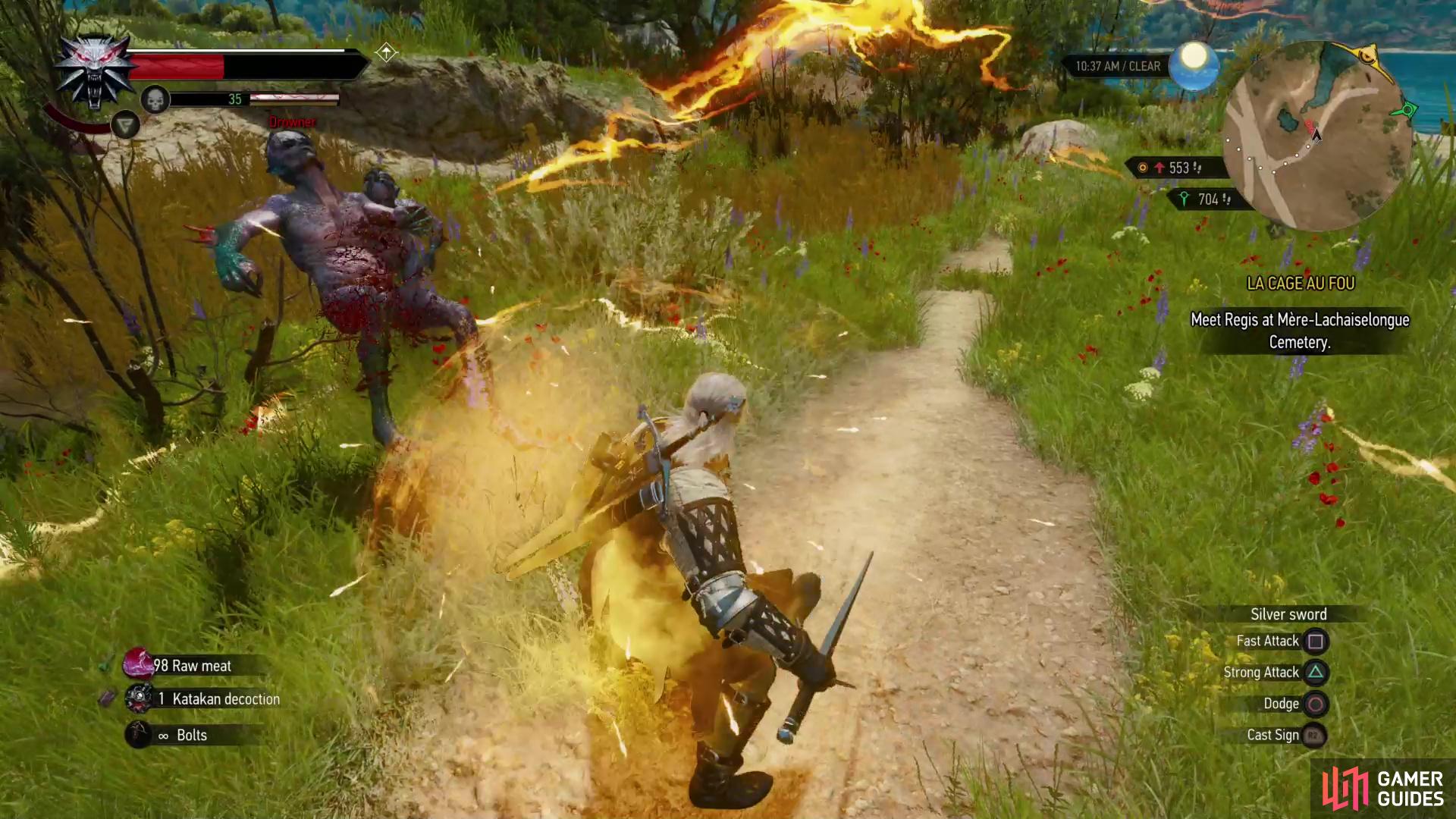Death March is the hardest difficulty in The Witcher 3: Wild Hunt, which may appeal to both gamers who want more of a challenge, as well as achievement hunters who are eyeing that [Walked the Path] achievement for completing the game on this difficulty. This page will provide information about exactly what changes in Death March difficulty, as well as tips for how to beat the game in Death March difficulty.
Enemies deal increased damage in Death March difficulty.
Death March Difficulty Differences¶
There are numerous changes that make Death March difficulty more perilous than lesser difficulties:
- Enemy damage +230%
- Enemy health +80%
- Experience earned -20%
- Your Vitality is not restored when you meditate
Monsters hit harder, and can withstand more punishment before perishing. Also, you’ll level up slower, which is, honestly, a minor concern. For beginners, not being able to just meditate for an hour to patch up any wounds you’ve sustained can be a real nuisance, but there are ways around all of these.
First, for the damage and health boosts enemies gain… they sound worse than they are. Some enemies which weren’t all that dangerous on lower difficulties will now prove lethal in a few hits - and this especially goes for bandits, wolves and drowners - and enemies that were already difficult can now kill you in a hit or two. Still, you’re mostly fighting enemies that can withstand a few more hits, while you can withstand a few less, and if you’ve played some “hard” games besides The Witcher 3, Death March mode should be at worst comparable to, say, your standard Souls game in terms of what you can expect.
In Death March, your Vitality no longer recovers when you meditate - before you have access to Active Shield, just eat and drink to boost your Vitality regeneration.
Healing without meditating is somewhat more tedious, but it’s not a backbreaking handicap. Geralt still regenerates Vitality over time, so you could always just idle the game. Consuming common food items - bread, water, meat - will also give you a temporary boost to Vitality regeneration. Perhaps not enough to matter in combat, but if you need to make that health bar at the top of the screen more red, a few snacks will suffice. If you don’t mind respeccing, you can grab the “Sun and Stars” perk to increase your Vitality regeneration from an anemic 1/s to a… still pretty poor 10/s, and only during the day (at night you’ll regenerate Stamina faster, instead). Alternatively you can grab the “Gourmet” perk, which will make the effects of food last for 20 minutes instead of the normal 30s - 60s, which functionally gives you a long-lasting boost of 10 - 15 Vitality regeneration per second any time you fancy a treat. Neither of these are strictly necessary and we’ve done without them ourselves, but [respeccing] only costs 1,000 crowns…
Quen’s “Active Shield” upgrade will cause incoming attacks to heal you, and “Exploding Shield” will knockback and stun foes when Quen is depleted.
Most of the difficulty changes are felt in the early game. In fact, your first fight against Ghouls in White Orchard is arguably the most difficult battle in Death March difficulty, as you’ll have the least resources to deal with your enemies. Once that’s done, however, you can level up, stock up on materials, upgrade your gear, and perform hit-and-run attacks to whittle enemies down. Once you’ve put on a few levels, Death March will become much, much easier - White Orchard is the worst of it, and by the time your level is in the midteens, you’re probably not sweating too many encounters… aside from the odd Ciri segment or forced fist-fight (especially against multiple foes in enclosed spaces!), which are always difficulty spikes.
Check out the following pages for more information about Death March difficulty:




 Sign up
Sign up
No Comments